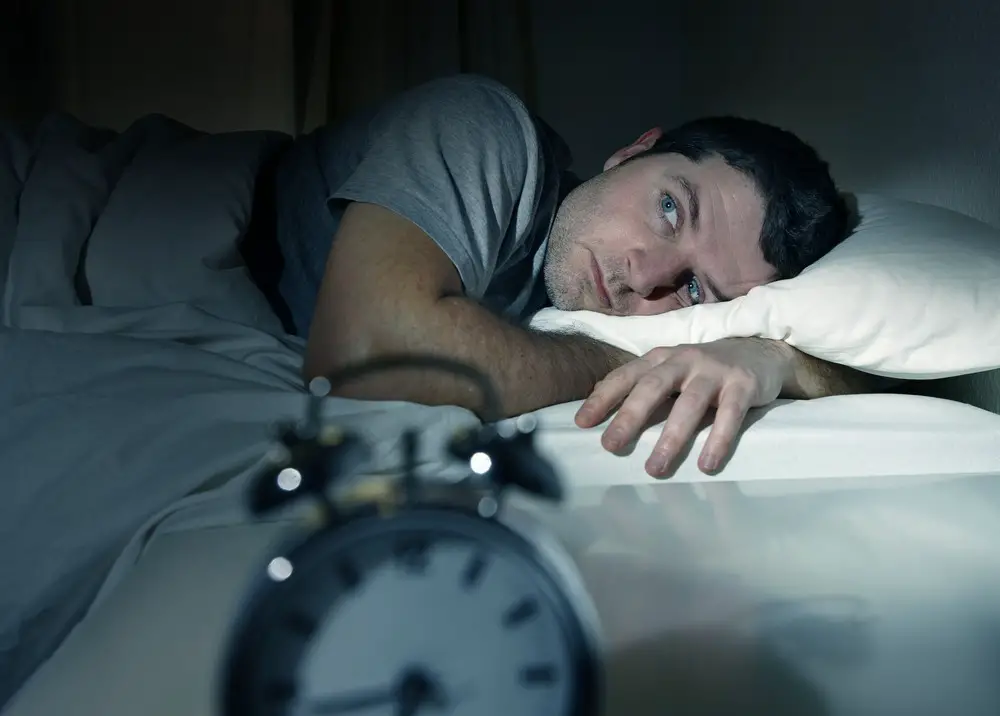As a BetterHelp affiliate, we receive compensation from BetterHelp if you purchase products or services through the links provided
Tossing and turning in bed when you’re desperate for sleep is frustrating. You’re not alone if falling asleep fast seems like an impossible dream. A good night’s rest can feel out of reach, especially with busy minds and long days.
Relaxation is vital to slipping into sleep quickly. It helps your body and mind settle down.
This article offers tips to help you fall asleep swiftly. We’ll share easy changes to your bedtime routine, from breathing techniques to cooling down the room. These small steps can lead to big improvements in how fast you fall asleep.
Get ready for better nights ahead!
Sleep Hacks: 5-Minute Tricks for Faster Zzz’s
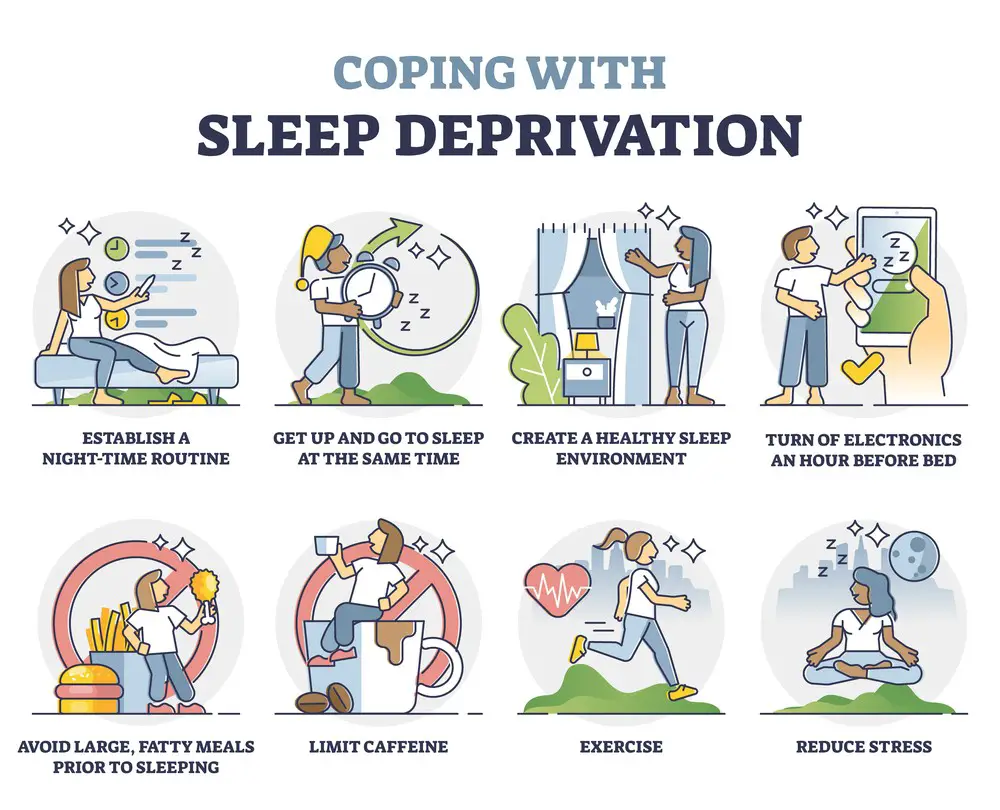
Need to fall asleep quickly? Our sleep hacks offer 5-minute tricks that promise faster Zzz’s.
Lower Room Temperature
Lowering the room temperature can significantly boost your sleep quality. Experts suggest that a cooler room helps promote quicker sleep by signaling to your body it’s time to rest.
Try setting your thermostat between 60-67 degrees Fahrenheit for optimal sleeping conditions. This cool environment encourages the natural drop in body temperature needed for deep sleep, making it easier to fall asleep swiftly.
Dropping the temperature before bedtime creates a calm sleep environment, one key factor in falling asleep fast. If you feel too cool, cover up with a comfortable blanket, but keep the air around you refreshing and conducive to sleep.
This simple change in your nightly routine can greatly affect how quickly you drift off into dreamland.
Practice Breathing Techniques
Breathing techniques can dramatically improve your ability to fall asleep swiftly. One effective method is the 4-7-8 technique, which involves breathing in deeply for 4 seconds, holding that breath for 7 seconds, and then exhaling slowly for 8 seconds.
This exercise helps calm the mind and prepares your body for sleep by reducing stress.
Mastering breathing exercises can transform restlessness into tranquility, guiding you into a peaceful slumber.
Incorporate this practice into your bedtime routine to relieve tension. Focusing on your breath distracts from daily worries, making it easier to slip into deep sleep. Regularly performing these breathing exercises can improve sleep hygiene and a more serene bedtime atmosphere.
Stick To A Sleep Schedule
Setting a consistent sleep schedule helps your body’s internal clock get into a routine, making it easier to fall asleep quickly each night. Go to bed and wake up at the same time daily, even on weekends.
This consistency tells your body when it’s time to rest and when it’s time to start the day. Sticking to this pattern can significantly improve your sleep quality and speed up the time you drift off at night.
Avoiding naps during the day is crucial as they disrupt your natural sleep cycle. If you feel sleepy before bedtime, engaging in a relaxing activity like reading or listening to calm music might help keep you on track with your schedule.
Maintaining these habits forms part of an effective bedtime routine. It signals your brain it’s time for rest, aiding in a swift transition to sleep.
Instant Sleep: Mastering the Art of Quick Zzz’s

Imagine falling asleep the moment your head hits the pillow. With the right techniques, you can master the art of drifting off quickly every night.
Using The Military Method
The Military Method is a sleep technique developed for soldiers to fall asleep quickly in any condition.
Start by relaxing your face, including the muscles inside your mouth. Then, drop your shoulders as low as they’ll go before relaxing your upper and lower arms on one side, then the other.
Breathe out and relax your chest, followed by your legs, starting from the thighs and working down to your feet. Visualize a calming scene or repeat “don’t think” for 10 seconds in your mind.
This method can help you drift off within minutes.
This approach combines relaxation techniques with visualization to calm an anxious mind and swiftly prepare the body for sleep. By systematically relaxing each part of the body, you signal to yourself that it’s time to rest, which greatly aids in speeding up the process of falling asleep quickly.
Practicing this method regularly can improve overall sleep quality and diminish bedtime anxiety, often associated with insomnia tips or stress reduction strategies discussed by experts.
Trying 4-7-8 Breathing
After exploring the Military Method, another effective technique to consider is 4-7-8 breathing. This simple exercise can significantly impact your ability to fall asleep swiftly. You start by taking a deep, slow breath from your diaphragm, counting to four as you inhale.
Hold that breath for a count of seven. Finally, exhale slowly and fully over a count of eight. This process helps reduce stress and prepares your body and mind for sleep.
Performing this breathing method before bed can quiet an anxious mind and create the relaxation needed for fast sleep onset. Experts suggest incorporating it into your bedtime routine because it has calming effects on the nervous system, making it easier to drift off to sleep quickly without tossing or turning through the night.
Practicing regularly enhances its benefits, improving overall sleep quality and faster sleep times.
Progressive Muscle Relaxation
Moving from the calming effects of 4-7-8 breathing, another powerful tool for achieving swift sleep is Progressive Muscle Relaxation. This technique focuses on tensing each muscle group in the body tightly but not to the point of strain and then relaxing them deeply.
You start with your toes and gradually move up to your neck and head. Doing this can release tension throughout the body, making it easier to fall asleep quickly.
Progressive Muscle Relaxation helps calm an anxious mind by shifting focus away from busy thoughts towards physical sensations of relaxation. It prepares your body and mind for sleep, aligning with expert recommendations to establish a bedtime routine that includes relaxing before bed.
This method can be valuable in improving sleep hygiene and finding peace more readily at bedtime.
Fall Asleep Faster: Tips to Snooze in Seconds

Want to sleep in seconds? Achieving fast sleep might seem like a dream, but with the right techniques, it’s entirely possible. Here are expert-approved methods to help you fall asleep swiftly:
- Create a calm sleep environment: Ensure your bedroom is for sleeping only. Keep it calm, quiet, and dark to signal your body it’s time for bed.
- Establish a consistent bedtime routine: Doing the same activities each night can signal your brain that it’s time to wind down. Whether it’s reading or taking a warm bath, consistency is key.
- Avoid napping during the day: While tempting, daytime naps can make falling asleep at night harder. Stick to sleeping at night to maintain a healthy sleep cycle.
- Reduce screen time before bed: The blue light from screens can interfere with your ability to fall asleep. Turn off gadgets at least an hour before bedtime to avoid this.
- Watch what you eat and drink: Heavy meals right before bed can keep you awake. Aim for lighter meals and avoid caffeine and alcohol close to bedtime.
- Manage stress with relaxation techniques: Try meditation or gentle yoga poses to calm your mind and prepare your body for restful sleep.
- Practice breathing exercises. The 4-7-8 technique is especially effective: Breathe in for 4 seconds, hold for 7 seconds, and exhale for 8.
- Make the room cooler: A slight drop in temperature can help you fall asleep faster, signaling to your body that it’s time for rest.
- Use natural sleep remedies responsibly: Options like melatonin supplements can promote quicker sleep onset, but consult a doctor first.
These tips emphasize the importance of preparing both your mind and environment for sleep, making falling asleep swiftly not just possible but effortless with practice.
Sleep Fast and Sound: Techniques to Try Tonight
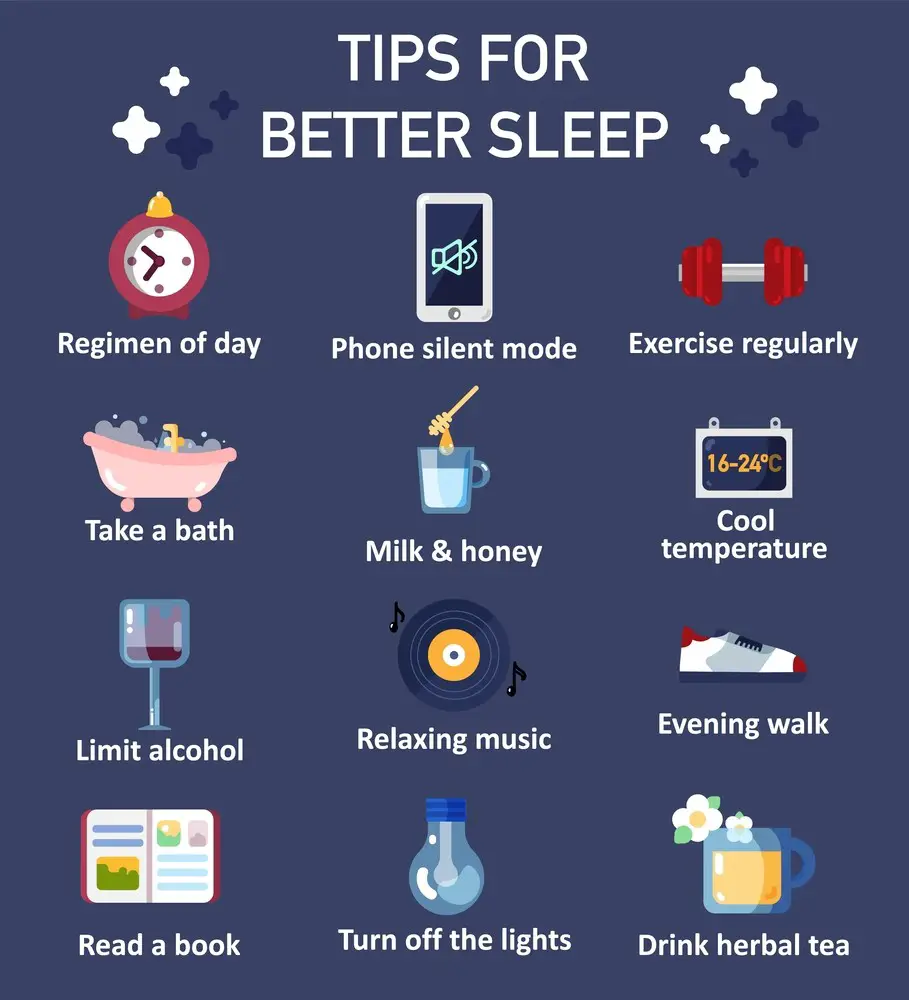
If you seek to unlock the secrets to instant rest, you can try several powerful techniques tonight to help you fall asleep faster and enjoy a more sound, refreshing slumber. One highly effective method is called the “cognitive shuffle.”
This technique involves visualizing a peaceful scene, such as a serene beach or a tranquil forest, and then mentally shuffling through different sensory experiences within that scene. By engaging your imagination and shifting your focus away from intrusive thoughts, you can calm your mind and promote relaxation.
Another technique worth trying is the “4-7-8” breathing exercise. Inhale through your nose for a count of 4, hold your breath for a count of 7, and then exhale through your mouth for a count of 8. This simple yet powerful breathing pattern can help regulate your body’s natural rhythms, reducing stress and anxiety, and paving the way for effortless sleep.
Repeat the cycle as needed until you feel yourself drifting off.
Practicing mindfulness meditation can be a game-changer for those who struggle with racing thoughts or persistent worries. By training your mind to focus on the present moment and let go of intrusive thoughts, you can cultivate a sense of calm and serenity that facilitates a smoother transition into sleep.
Consider incorporating a guided meditation app or podcast into your bedtime routine to help you get the right mindset for instant rest.
Remember, finding the best techniques for you may require experimentation and patience. However, by consistently incorporating these methods into your nightly routine, you can unlock the secrets to falling asleep quickly and waking up feeling refreshed and rejuvenated.
Effortless Sleep: How to Drift Off in Minutes
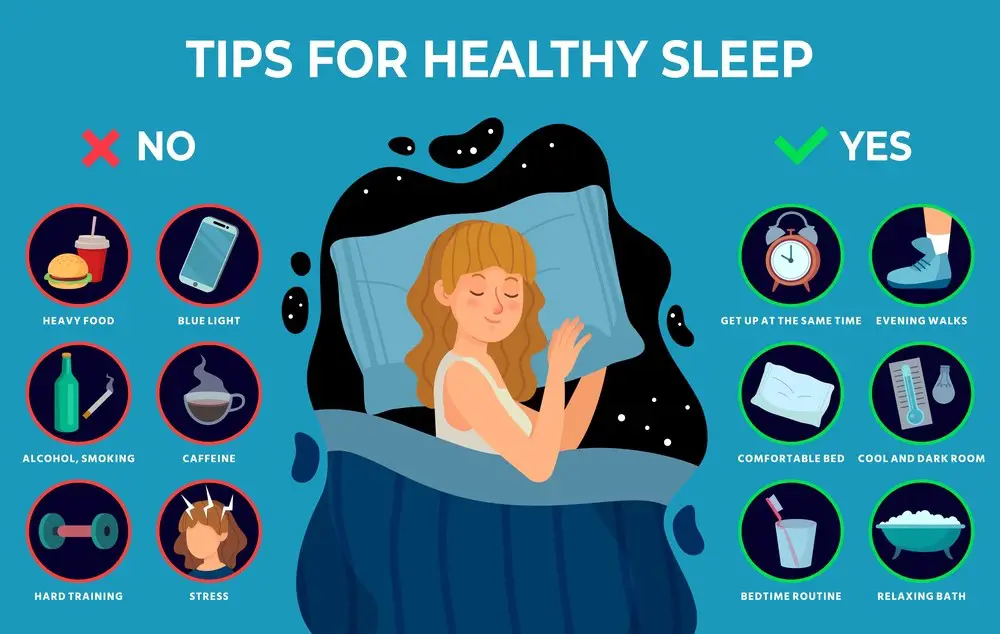
Many people covet effortless sleep, and with the right techniques, they can drift off into a peaceful slumber within minutes.
One highly effective method is the “military method,” which involves relaxing your body from head to toe and clearing your mind through visualization techniques.
By consciously tensing and releasing each muscle group, you can promote a deep relaxation that allows for instant rest.
Another powerful technique is known as “paradoxical intention therapy.” This counterintuitive approach involves embracing staying awake rather than fixating on falling asleep.
Shifting your mindset and removing the pressure to sleep can often trick your brain into a state of relaxation, allowing sleep to find you naturally. Combining this with deep breathing exercises can further enhance its effectiveness.
Practicing mindfulness and meditation can be invaluable for those who struggle with persistent thoughts or worries. By training your mind to focus on the present moment and let go of intrusive thoughts, you can cultivate a sense of calm and serenity that facilitates effortless sleep.
Consider incorporating guided meditations or simple mindfulness exercises into your bedtime routine to prime your mind and body for instant rest.
Remember, the key to unlocking the secrets to instant rest lies in finding the techniques that resonate with you and integrating them into a consistent sleep routine. With patience and dedication, you can master the art of effortless sleep and wake up refreshed and rejuvenated.
Sleep On-Demand: Unlocking the Secrets to Instant Rest
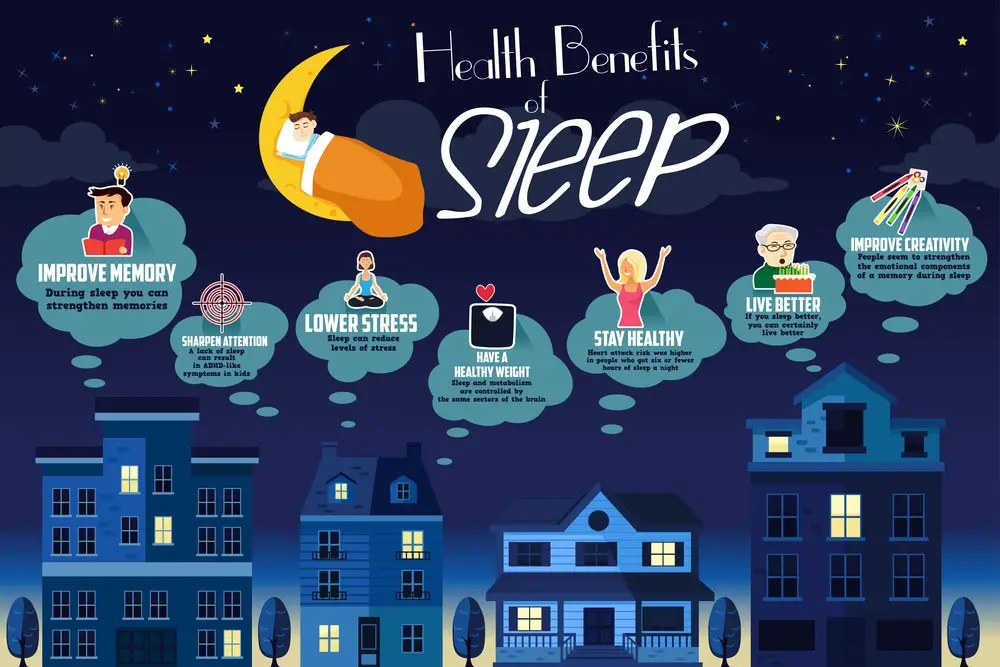
Mastering falling asleep quickly is a game-changer for those seeking to optimize their rest and enhance overall well-being. While it may seem elusive, several tried-and-tested methods can unlock the secrets to instant rest, allowing you to drift off into a peaceful slumber on demand.
One highly effective technique is known as the “4-7-8” breathing method. By inhaling through your nose for a count of 4, holding your breath for a count of 7, and exhaling through your mouth for a count of 8, you can trigger a relaxation response in your body, calming your mind and facilitating a smoother transition into sleep.
This simple yet powerful exercise can be repeated until you feel the alluring pull of slumber.
Cognitive-behavioral therapy for insomnia (CBT-I) can be a valuable tool for those who struggle with racing thoughts or persistent worries. This approach teaches you to reframe negative thought patterns and develop healthier sleep habits. Techniques like sleep restriction, stimulus control, and cognitive restructuring can help you regain control over your sleep and cultivate a more positive relationship with rest.
Beyond these methods, creating an environment conducive to sleep is equally important.
Ensuring your bedroom is cool, dark, and free from distractions can signal your body that it’s time to wind down. Additionally, establishing a consistent sleep routine and avoiding stimulants like caffeine and electronic devices before bedtime can enhance your ability to fall asleep quickly and experience restorative, uninterrupted rest.
Sleep Better, Sleep Quicker: Tried and Tested Methods
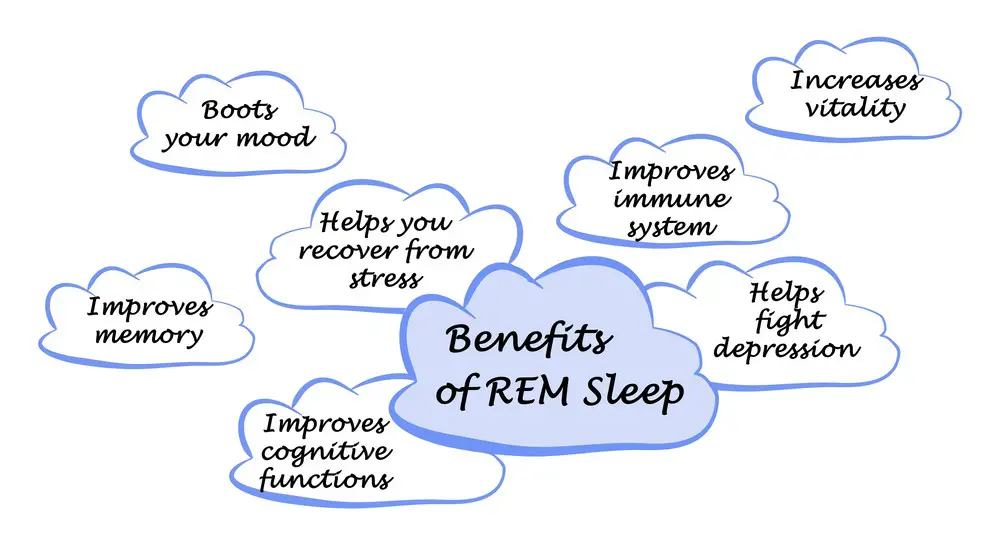
Establishing a consistent sleep routine is one of the most effective ways to train your body to fall asleep faster. Aim to go to bed and wake up simultaneously every day, even on weekends. This helps regulate your body’s internal clock, making it easier to wind down at night.
Additionally, create a relaxing bedtime ritual, such as taking a warm bath, practicing gentle stretches, or reading a book, to signal to your brain that it’s time to prepare for sleep.
While creating a sleep-conducive environment is essential, certain techniques can help you drift off more quickly. Deep breathing exercises, progressive muscle relaxation, and visualization techniques can calm racing thoughts and promote a sense of tranquility. Consider downloading a meditation app or guided sleep podcast to guide you through these practices.
Alternatively, some individuals find white noise or soothing nature sounds helpful in masking disruptive noises and promoting relaxation.
If you still struggle to fall asleep after trying various methods, it may be beneficial to examine your daily habits and make adjustments accordingly.
Limiting caffeine intake, especially in the afternoon and evening, can prevent interference with your sleep cycle. Regular exercise, but not too close to bedtime, can promote better sleep quality.
Lastly, minimizing screen time and exposure to blue light during your desired sleep time can help regulate your body’s natural sleep-wake cycle.
Mastering the Art of Quick Slumber: The Ultimate Guide
Building on the foundation of tried-and-tested methods for sleeping better and quicker, mastering the art of quick slumber becomes a natural next step. This ultimate guide focuses on harnessing specific techniques that align with your body’s needs for rapid relaxation.
It incorporates creating a calm sleep environment, practicing regular breathing exercises, and establishing a consistent bedtime routine. These strategies are designed to speed up falling asleep and enhance the quality of your rest.
Adopting habits such as reducing screen time before bed is crucial in quickly preparing your mind for sleep. Watching what you eat, managing stress efficiently, and ensuring your bedroom is an oasis for rest can make significant differences.
Visualizing calming scenes or focusing on soothing sounds helps clear an anxious mind, making room for serene slumber. These practices routinely bring you closer to achieving effortless nights filled with deep and rejuvenating sleep.
Discovering the Power of Quick Sleep: Easy Techniques for Busy Lives
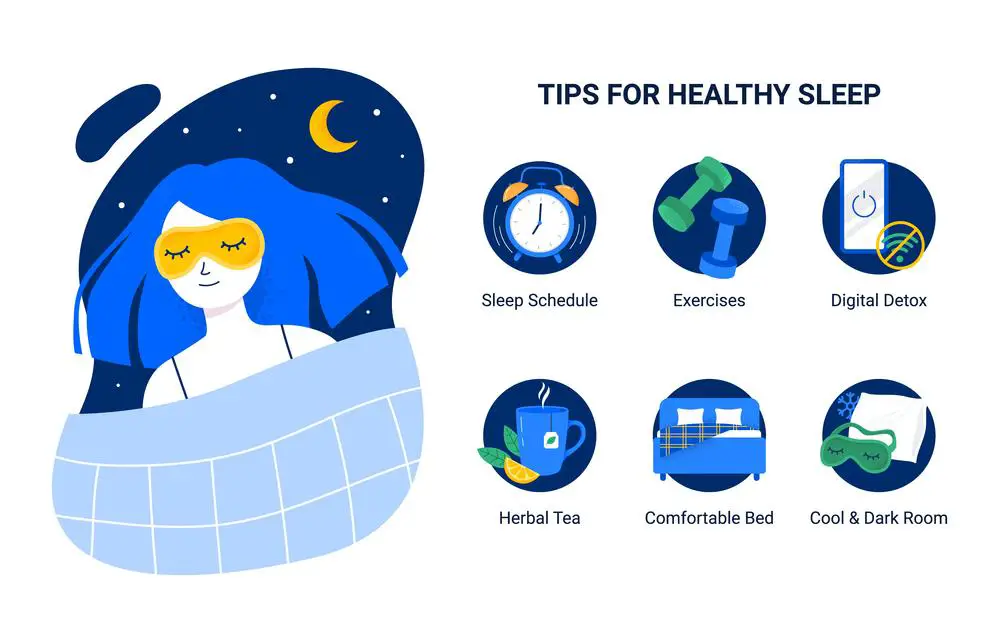
In our hectic lives, quickly transitioning to restful sleep can significantly improve our health and productivity. Whether you’re overwhelmed with work, studying late, or simply trying to balance life’s demands, here are some effective methods to help you fall asleep faster and enjoy a more refreshing night’s sleep:
- Establish a Regular Sleep Schedule: Aim for consistency in your sleep patterns. Go to bed and wake up simultaneously every day, including weekends, to help regulate your body’s clock and improve your sleep quality.
- Develop a Relaxing Bedtime Routine: Disconnect from electronic devices and engage in calming activities before bed, such as reading a book or taking a warm bath. This helps calm your mind and signals your body that it’s time to sleep.
- Optimize Your Bedroom Environment: Make sure your sleeping area is ideal for rest—cool, dark, and quiet. Invest in blackout curtains, a comfortable mattress, and perhaps some soothing sounds or white noise to block out disruptions.
- Keep Naps Short and Early: While napping can rejuvenate, long or late-day naps can interfere with nighttime sleep. If you need a nap, keep it under 20 minutes and before 3 p.m.
- Try Relaxation Techniques: Engage in mindfulness practices such as meditation or deep breathing exercises like the 4-7-8 technique to relax your body and mind before bed. Many apps offer guided sessions that can help.
- Watch Your Diet: Avoid caffeine, nicotine, and big meals late in the day. These can disrupt your sleep by stimulating the body or causing discomfort.
- Incorporate Physical Exercise: Regular exercise can aid in falling asleep faster and deepening sleep. However, try to finish any vigorous activities a few hours before bedtime to allow your body to unwind.
Adopting these strategies can lead to quicker and more efficient sleep cycles, waking you up refreshed and energized. Experiment with these tips tonight and tailor them to fit your lifestyle for the best night’s sleep possible!
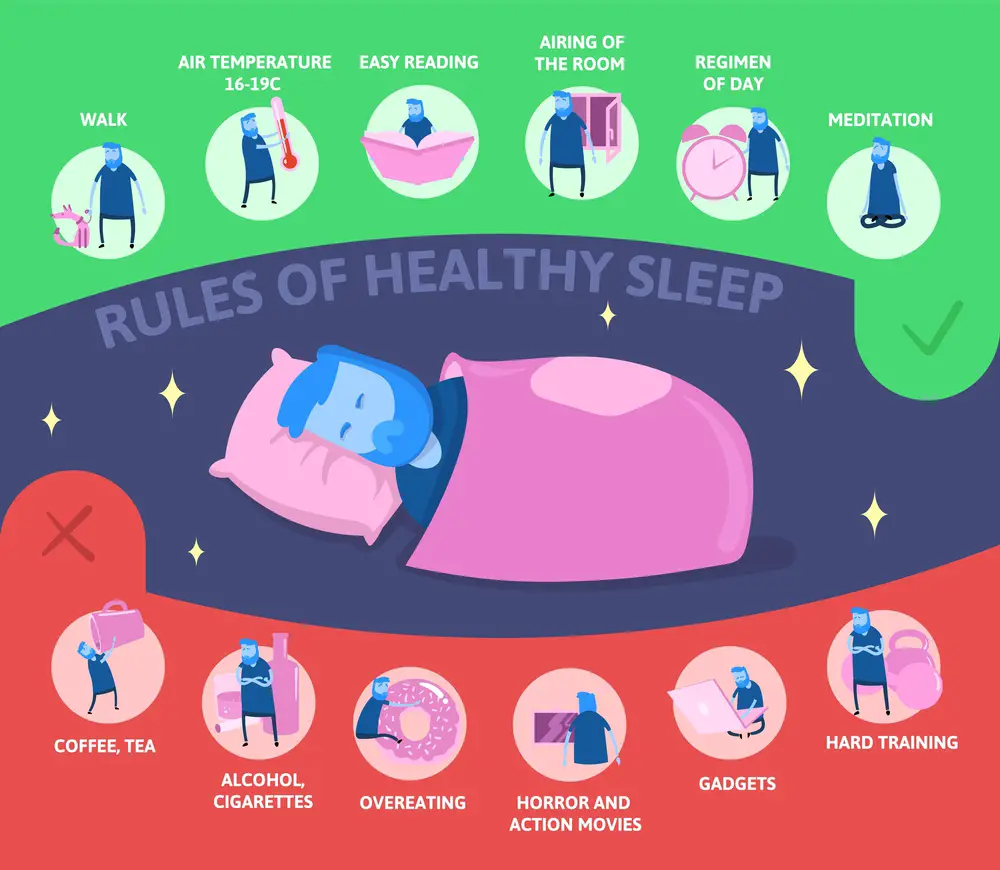
Discovering how to sleep quickly can transform your nights and improve your days. Small steps like adjusting the room’s temperature and practicing mindfulness before bed show significant advancements in falling asleep swiftly.
Consistency in these habits paves the way for quicker zzz’s, making every night a step closer to immediate rest. Embrace these changes; your dream of effortless slumber is within reach with each passing night.
So tonight, why not start with one tip and see how fast you drift off into a peaceful sleep?
- Breaking the Silence: Why Men’s Mental Health Matters More Than Ever - April 15, 2025
- How to Transform a Home’s Patio Space into a Relaxing Space - March 23, 2025
- 5 Strategies to Use a Cell Phone to Help Manage Your Stress - March 23, 2025
This site contains affiliate links to products. We will receive a commission for purchases made through these links.


